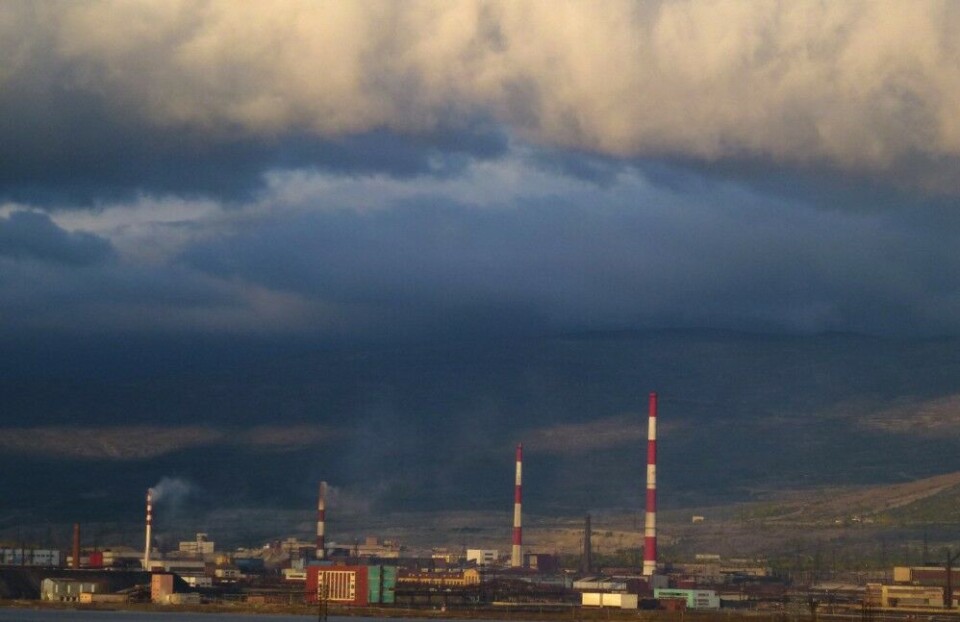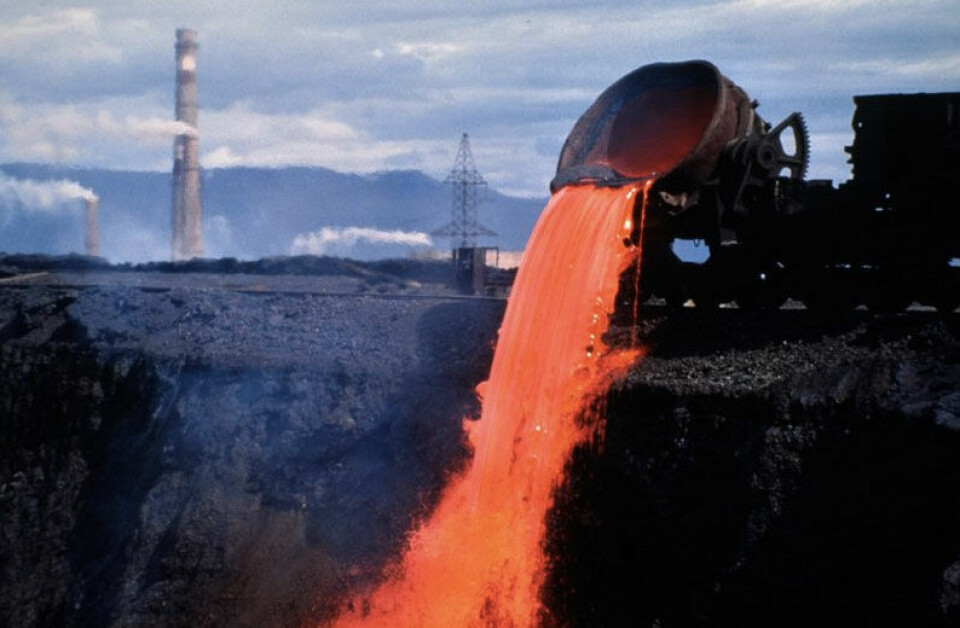
«Buy gas masks!»
Such was the advice given by local officials to the residents of Monchegorsk who are being poisoned with sulfur dioxide emissions
Text by Tatyana Britskaya, Novaya Gazeta
Nine times more than the maximum permissible. According to the hydrometeorological service, this was the concentration of sulfur dioxide Monchegorsk city residents breathed over the March holidays. This monstrous figure was published much later, only after the yellow fog, which had hung in the air for several days, finally dissipated. On the first day, the mayor’s office modestly mentioned that the TLV (Threshold Limit Value) was more than twice the acceptable limit. In order to avoid panic apparently, the decision was made to avoid announcing the real concentration. The city did not offer to transport children, allergy sufferers or asthmatics from the danger zone during the crisis.
Sulfur dioxide in this excess creates cancer, cardiovascular diseases, intoxication in all living things and contaminates the soil. Sulfur dioxide in such amounts creates a veritable lunar landscape around industrial plants. This same lunar landscape can be seen near Monchegorsk around the Severonickel combine, which is now owned by Norilsk Nickel’s Kola Mining and Metallurgical Company. And their nickel and copper smelting process, which also produces sulfuric acid, has created this landscape.

The tundra around the plant turned to scorched earth long before the privatization of the plant. The city, though standing in a basin, was built taking into account that the wind took some part of the emissions from the plant’s smokestacks away from the residential area for the most part. And in contrast to the smoky Severonickel and Zapolyarny plants, where Nornickel’s largest production centers are located, Monchegorsk might be considered a pretty green town. There are 46 thousand inhabitants and almost every family has someone working at the plant. It is for sure a factory town and earnings are not bad by regional standards. The thinking is that life is better here, the climate is softer and the infrastructure is quite decent. The city stands on a federal highway and Murmansk is only a couple of hours away. So that citizens of Monchegorsk relatively infrequently complained about the harmful emissions is understandable.
But on March 7, residents started complaining of choking, throat irritation and the smell of sulfur coming from the water taps. There was no wind. And at full calm and with a strong frost, the level of toxicity in the air had risen to very dangerous levels. The combine should have reduced production to limit emissions but the work was going on at full speed. Motorists were the first to complain about the yellow haze. Traffic cops started blocking a section the federal highway since visibility had fallen to almost zero. The official summaries shyly categorized the phenomenon as “fog” in an otherwise good weather day with clear skies.
The townspeople though filed 50 complaints with the president. A day with fifty complaints was enough to bring Yevgeny Mingalev, the head of the Rosprirodnadzor regional department to the city by the evening. He told the Novaya Gazette that on the evening of March 7, there were 8 TLVs (8 times the official limit) for sulfur dioxide a hundred meters from the plant and five TLVs three hundred meters from it and this was also true in the city itself.
And the city complained loudly. How was it possible that the townspeople were not told anything? Why were they not informed about such a situation? And where was the chief doctor of the city? Why was there no information for people with asthma, chronic lung and respiratory diseases about what to do in the case of a massive sulfur oxide release? And in addition to warning people about the emergency, wasn’t the combine supposed to provide milk to everyone who had experienced a gas attack? The social networks discussed what had happened all March since March 7 was not the only one environmental catastrophe from the combine. There was yet another sick yellow fog clouding the city curtesy of over production on a still day around March 20th.

Yes, the city knows that the main source of the sulfur dioxide is the plant. They know all about this. But for some reason, at a working meeting in the mayor’s office, they decided to point their fingers at the local thermal power plant. And, as a solution to the problem, they decided in this meeting to reduce the temperature of the coolant at the heating plant, or in other words, they decided to cool the radiators in Monchegorsk apartments as protection against the sulphur gas. It was, by the way, -26c that day.
Meanwhile, once the plant completely stopped the smelting prosses, the problem did resolve itself. By the following day, the sulfur dioxide content in the air dissipated 5-fold and settled at the maximum permissible concentration. The head of Rosprirodnadzor also told us about this. They do face legal repercussions though and the plant faces a fine of up to 200 thousand rubles (€2.700) due to these lapses of judgement. This is not a particularly large amount for the main taxpayer of the region.
In early April, on the initiative of the townspeople, a meeting was held at the local cultural center hall and officials had to justify themselves to the unfortunate citizens of Monchegorsk who, understandably, do not want to die. Some simple and specific questions were put to the authorities: When will the emissions stop? And will the plant install modern treatment facilities?
Maxim Ivanov (a deputy of the Duma and a part-time assistant to the general director of Kola MMC, the plant’s parent company) spoke dramatically in an operatic baritone about the difficult choices faced by Norilsk Nickel. Either large investments needed to be made or they would have to completely eliminate the harmful production. It was pointed out however that the latter would mean substantial job cutting and a great loss of tax revenue to the region. But according to the tragedy in Ivanov’s voice, it was clear that waiting for investments is simply fantasy and therefore, it’s time to prepare for the closure of the plant (and for the Earth to fly off its celestial axis because neither is going to happen), and all the complainers are to blame. Don’t worry, you will not need to wear gasmasks and everyone can live peacefully. By the way, officials were exactly advised to get respirators or gasmasks and to protect themselves by any means available.
The deputy and assistant to the general director added however, that from a scientific point of view, gasmasks are mandatory at 20 TLVs, 20 times more than the maximum allowable concentration for residential areas, which is the case at the plant.
Then Mr. Ivanov complained about the weather. He said that on March 7, he would not have not let the children go for walks. The perfect storm of weather conditions was just an anomaly, an act of god, and so really, there are no ongoing problems to worry about.
Here, an argument was raised that in fact, there have been such “anomalies” before. A couple of years ago, the decision was made to shorten a failing smoke stack from one of the plants. The lower height of the tower allowed smoke to spread over the city. Mr. Ivanov did not refute this but said they would not discuss that in this conversation. Citizens though were assured that reconstruction of a new, taller pipe was in process despite that the process might require several more years.
The authorities also did not want to discuss that the catastrophe was a product of over production and even an expected one. Monchegorsk became the center of Norilsk Nickel’s refining production when the metal giant transferred a part of their production here after closing their Norilsk plant in 2016. This well documented closure was due to “very serious continuing violations of temporary norms” after decades of extensive levels of sulfur dioxide, bisulfide, phenol, formaldehyde, and dust pollution were sent into the air, land and local water reservoirs of the region. By this time, Norilsk had become known as “the city of horrors” and “the dirtiest city in Russia”.
If the inhabitants of Monchegorsk felt anything at this moment, it was probably not pride. More likely it was the symptoms of poisoning.
Now they are afraid to sleep with open windows. If the wind subsides, that mistake could lead to headaches and nosebleeds by morning.
As to what can be done, despite the ecological problems and health risks, the economics of the situation make either closing or modernizing difficult or impossible. A bill introduced last year by the Russian Ministry of Finance will allow companies investing in the environmental friendliness of their production in the Arctic zone to reduce the profit tax from twenty to five percent. This may be helpful but it might not be enough for Norilsk Nickel, who gives every fourth ruble to the treasury of the region. Serious modernization is not only difficult but also very expensive and therefore, unprofitable. And, this would be true both for the metallurgical giant and for the regional government as well. The necessary investments in the environment would nullify the already scarce budget of the region.
Of course, you can find other sources of investment in environmental security. For example, Norway and Norilsk Nickel entered into an agreement in 2001 under which the kingdom was to give the company a grant of NOK 270 million (EUR 32 million) and a loan of $30 million USD for 10 years from the Nordic Investment Bank. The money was intended for the modernization of the burning shop in the Zapolarny combine and the smelting shop in Nikel for the sake of reducing emissions. Both workshops are located practically on the border with Norway where their emissions are called “clouds of death”.
But in the winter of 2009, Norilsk Nickel informed the Norwegian authorities that it would not comply with the terms of the agreement with the Nordic Investment Bank to improve the environmental situation in the metallurgical industry. And as far as this situation is concerned, there is nothing more to say.
Translated by Adam Goodman















